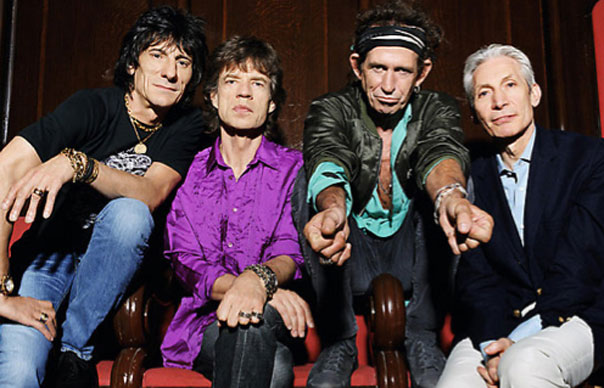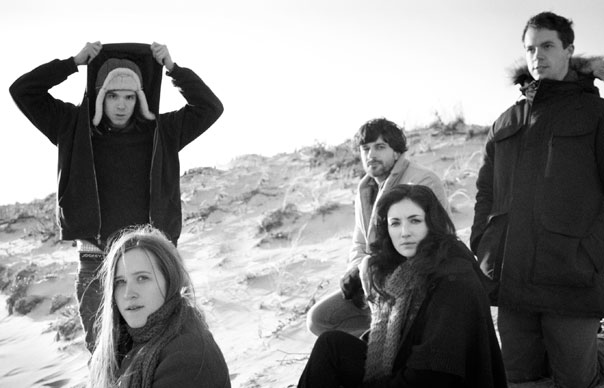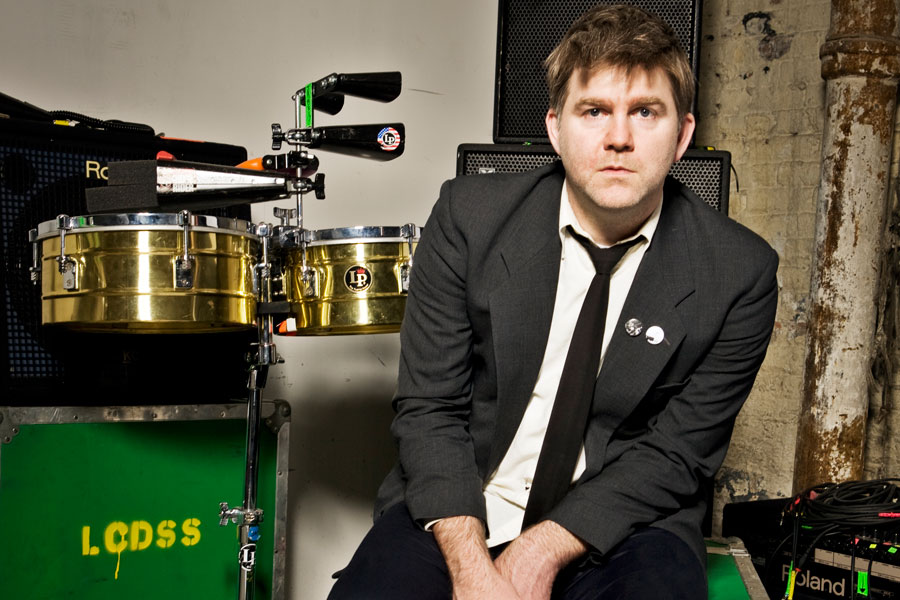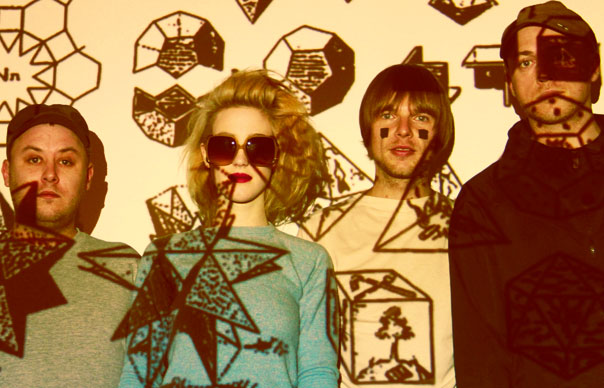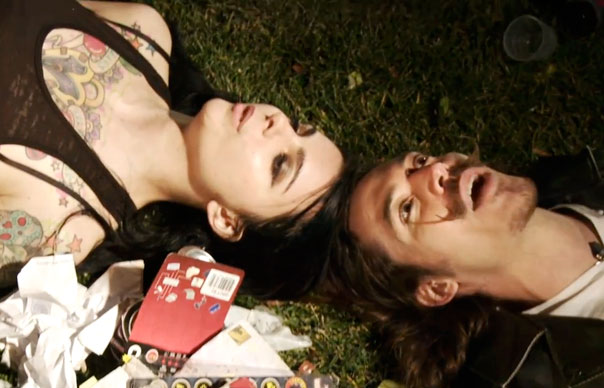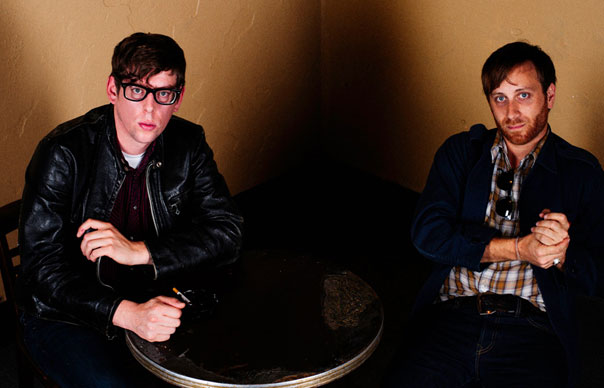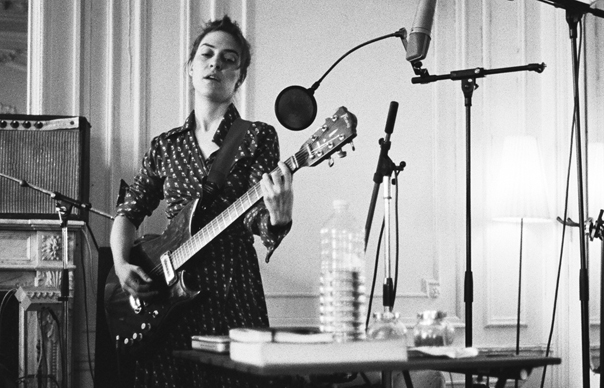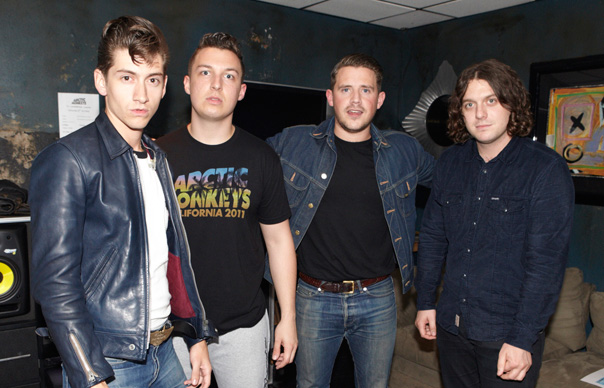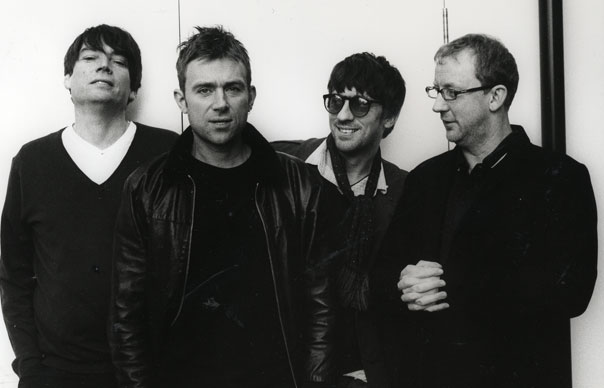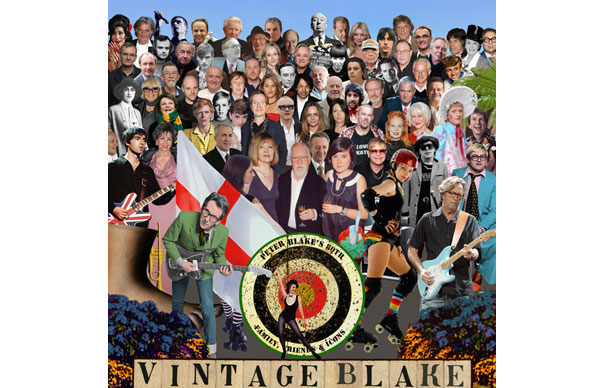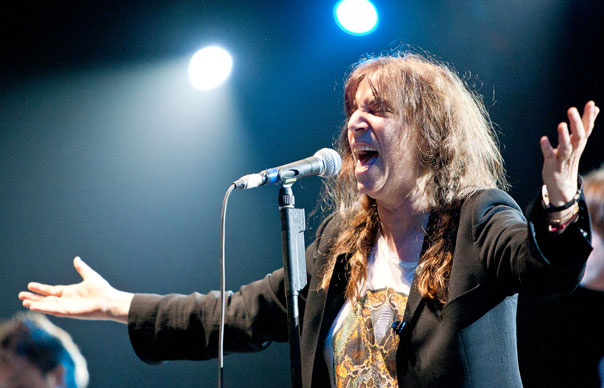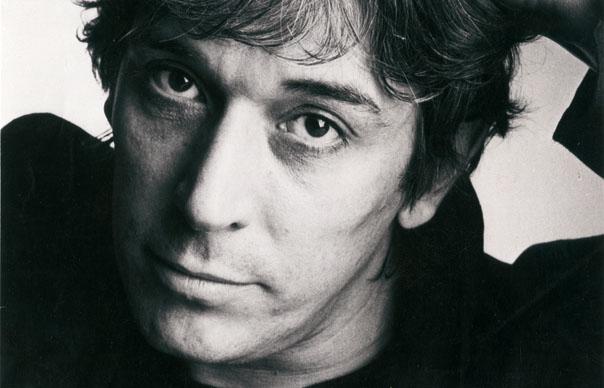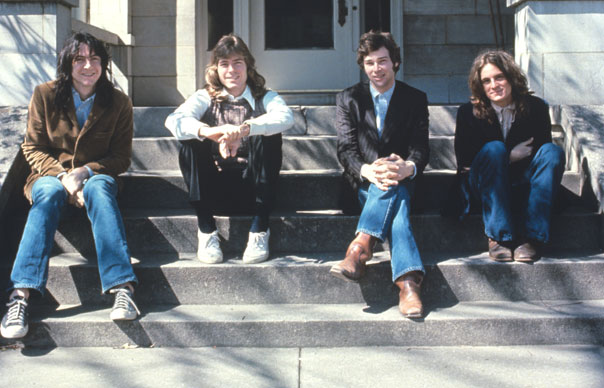Alex Chilton’s wild, idiosyncratic life after Big Star is examined in the new issue of Uncut (Take 180, May 2012), out now. But what happened before the demise of Chilton’s greatest group? They should have been rock superstars, but Rob Jovanovic explains how drugs, in-fighting and personal tragedy meant Big Star had to settle for being the biggest cult band of all time (from Uncut’s Take 94, March 2005).
________________________________
It’s autumn 1974, and the 23-year-old Alex Chilton has just stormed out of Ardent Studios during early sessions for Big Star’s legendarily harrowing third album. He’s just punched a door with a glass panel. The blood-soaked towel and mixing desk are testament to his frustration.
This isn’t his first outburst. Just a few days earlier, the same mixing desk was dismantled and cleaned down because a bottle of gin, aimed at Chilton’s head by a lover, missed its target and landed on the console. Studio owner John Fry ordered a complete service of the equipment.
This time, though, Fry has a quiet word with producer Jim Dickinson: “We simply can’t have blood on the mixing desk,” he says. “Have a word with Alex about it.”
Chilton is in turmoil and his behaviour during the sessions – abusing substances, fighting with friends, challenging his producer – proves it.
The former poster-boy of blue-eyed soul is burrowing deep into Memphis’ underground. At the age of 16 he’d been lead singer with The Box Tops, whose “The Letter” was 1967’s biggest worldwide hit. He’d toured with The Beach Boys and The Doors, hung out at Dennis Wilson’s house and met Charles Manson. While on tour he’d got a girl pregnant, married her in his parents’ living room on his 18th birthday and divorced her within a year. He quit the band mid-tour and moved to New York with the aim of becoming a folk singer, all before his 19th birthday.
Then he formed Big Star, the most brilliant, influential and troubled cult band of them all.
They could have been contenders. Unfortunately, after years of disasters and debauchery, at least one member will be dead while another will have become one of rock’s mythical fuck-ups.
Our tale begins in Memphis, the birthplace of rock’n’roll. When Anglophiles Big Star emerge in the early ’70s, they arouse little local interest. On the wider scene, their Beatles-esque power pop is being phased out in favour of glam and prog. It will take decades for them to be appreciated. The four members are the same age as rock’n’roll. Chris Bell (born January 12, 1951) comes from a wealthy family who own a mansion in East Memphis. Andy Hummel (born two weeks later in Pennsylvania) is the son of a well-respected gynaecologist and Miss America 1947 – a local celebrity with her own TV show. Jody Stephens (October 4, 1952) is the youngest. Although Elvis is the local hero, the February 1964 appearance of The Beatles on The Ed Sullivan Show really catches his attention. Like millions of Americans, he decides to form a band. Bell is soon taking guitar lessons, Hummel opts for bass, Stephens takes up drums and a kid called Chilton finds that he has quite a singing voice at a high school talent show.
William Alexander Chilton (28 December, 1950) grew up in a liberal household where his father, an ex-musician, runs a theatrical lighting company and his mother runs an art gallery. His early years are marked by tragedy when his eldest brother suffers a seizure and drowns in the bath. The youngest of four children, he’s a mess of contradictions, equal parts cultured bohemian and sneering degenerate.
Hummel and Bell meet at Memphis University School. Both have played in bands, and Hummel starts going over to the Bell estate to practise. This becomes a meeting point for artists of all kinds: drummer Steve Rhea and multi-instrumentalist Terry Manning hang out, as does photographer Carole Ruleman (who later marries Manning), while singer Tom Eubanks and others come and go. Through Manning, this loose ensemble is introduced to John Fry at Ardent Studio. Bell, Manning and Eubanks soon record an album under the name Rock City (see panel, right).
Stephens takes part in the first off-Broadway college production of Hair, which leads to an appearance at the 1970 Atlanta Pop Festival alongside Jimi Hendrix. He then meets Hummel and joins the young musicians hanging out at Ardent.
Concurrently, Chilton has joined up with local band The DeVilles. They change their name to The Box Tops and record “The Letter”, before going on to produce four albums in four years. Despite the outward signs of a happy, successful band Chilton feels hemmed in by the production team of Dan Penn and Spooner Oldham. He desperately wants to record his own material. So he quits and heads for New York.
In 1970, he’s visited by Chris Bell, who he knows from Memphis, during a trip to sell demo tapes of a line-up called Icewater – a band that includes Bell, Rhea, Hummel and Stephens. The trip is a bust.
Early 1971 and Chilton is back in Memphis. He calls in at Ardent late one night to talk about pooling talents with Bell. Chilton has some acoustic-based songs from his stint in the Big Apple and tells the others he’ll sing one called “Watch The Sunrise”. He sits down with his Martin 12-string and plays the tune while Bell records it. Bell adds an acoustic intro and some backing vocals. The first song for the as-yet-unnamed group is complete.
“Just Alex and Chris on guitars – absolutely beautiful,” is how Andy Hummel remembers this early session. “There was some sort of chemistry.”
It’s a volatile chemistry, which is why the Chilton-Bell partnership is productive but short-lived. Both have strong views, with Chilton’s one-take approach contrasting with Bell’s studio polish. For now, the two writers set to work. Bell spends days overdubbing guitars and layers of soaring harmonies. The Ardent crowd are Beatles fans and worship George Martin. Byrdsian guitars and Beach Boys harmonies are also favoured.
The songs are pure teen frustration and boy-girl heartache: lyrically, hanging out (“In The Street”), bust-ups (“Don’t Lie To Me”), parents (“Thirteen”) and the Vietnam draft (“The Ballad Of El Goodo”) loom large. Permeating the music, no matter how poignant or melodic, is a sense of dread.
As the sessions continue throughout 1971, the quartet take their name from a grocery store across the street – Big Star – and give the debut album an equally self-debunking title: #1 Record. The sleeve design is by Carole Manning; local artist Ron Pekar provides a neon star. It’s ready to go.
Ardent, however, is distributed through soul label Stax, which has no idea how to sell a white-boy guitar LP. Steve Rhea joins promotional whiz John King in getting the record reviewed everywhere from Billboard to Rolling Stone, but distribution lets them down – people can’t find the album in stores. Then Stax changes its distributor and for a while all the albums are recalled from the shops. The band are devastated.
As 1972 ends, and with no sign of sales picking up, Big Star start work on a follow-up, but tensions are high. Bell is behaving increasingly erratically, and fistfights break out between him, Hummel and Manning. Bell smashes a window and on one occasion attacks John Fry’s car. Things come to a head and Bell quits. He and Chilton agree to divvy up the songs prepared for the next album, but Bell is in such a bad emotional state he’s admitted to hospital. “The psychiatric floor of Baptist Hospital was like a prison,” remembers Fry. “It was frightening even to visit. Then Chris was moved to Mid-South Hospital, which was a psychological and rehabilitation facility with a more residential atmosphere.”
Bell is released into the care of his family in early 1973, but Big Star are finished. Chilton begins rehearsing and writing with other musicians. It’s only an ingenious ploy by John King that gets the three remaining members back together.
The Rock Writers Convention opens for business on May 24, 1973. King invites journalists from around the world to Memphis on the premise of forming a union. But he’s more interested in getting a captive audience for a local band showcase, with Big Star to headline as a trio. His strategy works: their performance assumes near-legendary status.
Notorious gonzo rock scribe Richard Meltzer makes the introductions: “Well, puke on ya momma’s pussy! Here’s Big Star!” From opener “Feel” to ad-libbed encore “The Letter”, the response is ecstatic.
Enthused, they reform for a second album. The result, Radio City, includes three tracks that Chilton recorded earlier in the year with drummer Richard Rosebrough and bassist Danny Jones. New material with Hummel and Stephens (who take more active writing and arranging roles) has a grittier, ‘live’ feel. The album swings manically from tender ballads (“I’m In Love With A Girl”) to full-tilt rockers (“You Get What You Deserve”). It also boasts “September Gurls”, their most famous song.
The release is scheduled for January 1974. Carole Manning comes up with another iconic design, this time using a photograph by William Eggleston titled The Red Ceiling. The photo on the rear of the album of Chilton, Hummel and Stephens steaming drunk surrounded by rednecks was taken during a night out at a watering hole down the road from Ardent – a favoured haunt. Hummel recalls the night the image was captured: “We wound up at TGI Fridays on Overton Square on rock’n’roll night. It was a major hell-raising scene. We drank a lot, stayed out all night and took all manner of drugs.”
Where Radio City is stocked, it sells well, but distribution is still a problem. Hummel has had enough. He’s in his final year of college, and decides to cut his losses. “I could either finish college and lead a more or less normal life,” he says today, “or I could drop out and go on tour. I was tired of being broke.” After college, he lands a job at General Dynamics in Fort Worth and has lived in Texas ever since.
John Lightman, a philosophy and psychology graduate, is drafted in on bass for the forthcoming tour. Chilton gives him copies of the two albums and tells him they’ll start rehearsals immediately.
Following shows in Memphis, they set off for NYC in winter ’74. Chilton is sinking into a drink-and-drugs mire, and sees Manhattan as the place to display his rock star credentials. Jealous that one of the band’s roadies has garnered some police attention when his radio is stolen from his hotel room, he throws a strop, ripping down the curtains in his and Lightman’s room and attempting to hurl a TV out the window. Because it’s bolted to the table, he almost gives himself a hernia. He drinks a bottle of whiskey and passes out on the bed instead. He’s gone from million-selling blue-eyed pin-up to cult hero who literally can’t get arrested.
The tour winds its way up to Massachusetts, through Canada and down into Ohio and Michigan, but often they arrive at a venue only to be told the show has been cancelled, and the gigs that do go ahead are sparsely attended.
Chilton deals with all this by drinking (one time, Lightman has to rescue him from a hot tub after he passes out). When the tour ends, Lightman quits, and over the summer Chilton throws himself into writing the band’s next LP.
Enter Jim Dickinson as producer, a man with a glowing CV. He’d performed with Aretha Franklin, played piano on The Rolling Stones’ Sticky Fingers album, and issued his own, Dixie Fried, in the early ’70s.
Chilton’s private life is in chaos by autumn ’74, and this is reflected in the sessions. His girlfriend, Lesa Aldridge, a senior in high school, helps write some of the material and sings on various tracks, though many of her contributions are later erased. Aldridge provides the perfect muse for Chilton’s tortured genius. She’s with him as he withdraws the last of his Box Tops money from the bank. But their stormy relationship can turn violent. One Ardent employee finds them fighting on the ground; when he tries to intervene, Aldridge screams at him to leave them alone.
The sessions drag on, with Chilton swallowing anything he can lay his hands on: Valium, Mandrax, Secanol, Demerol. According to eyewitness Richard Rosebrough, Chilton has “become a catastrophe”. Stephens will later describe him as a man possessed, baring fangs and drooling. “It was entertaining for a while,” recalls the drummer. “Then it got cruel.”
While Chilton dates Aldridge, Stephens sees her sister Holliday. They consider calling the album Sister Lovers, or even changing the band’s name to that. In fact, the album is never named or a track listing decided on.
Dickinson faces a constant battle, trying to keep Chilton in check. There’s no structure to the sessions and, when John Fry finally calls a halt to proceedings, no-one knows what songs will be on the album.
“Dickinson kept things focused,” Stephens recalls. “He held it together. There were times when Alex would do things that were unconventional. Jim could see the merit in these things. I liked the songs, but I couldn’t understand what Alex was doing.”
“People say the LP was unprepared or improvised but that’s utter crap,” says Dickinson. “Alex had demos for every song. John [Fry] told me that Alex had a key to the studio and he would go in during the middle of the night and fuck with the tapes.
“It was psychodynamically intense for sure,” he adds. “Alex set the tone of the recording on the night of the first session when he shot Demerol down his throat with a syringe.”
“I had a big drink’n’drugs lifestyle,” Chilton will admit. “I’d get up at four in the afternoon. Smoke a few joints; drink. Go to nightclubs; see some bands. Party all the time. I’d go into Ardent late at night after I’d been to bars and throw gin over the mixing board. Seemed a pretty revolutionary idea at the time. I was just trying to write something that seemed important. I feel that I discovered my muse… I finally began to write with confidence. There was a lot of Mandrax; you couldn’t get heroin in Memphis. But downs, generally. And unbelievable amounts of alcohol. If you take enough bad drugs and drink enough, you’re gonna be writing some pretty strange music.”
Chilton challenges Dickinson’s methods while working on a track called “Like St Joan” (later “Like A Kangaroo”, then “Kanga Roo”, and finally “Kangaroo”). Chilton and Aldridge go in late one night and record a vocal take and his 12-string guitar on the same track, so there’s no possibility of separation. Next morning he gives the tape to Dickinson and says: “If you want to be a producer, do something with this.” Dickinson adds Mellotron and guitar feedback.
“When I got into the feedback part Alex kind of lost his attitude and started participating,” says Dickinson. “He said later that that was the first place he ever trusted me. He felt it took his career 10 years forward into the future. ‘Holocaust’ is one of the songs that gives the LP its nihilistic reputation. The piano and melody resemble Yoko Ono’s ‘Mrs Lennon’, but it’s altogether darker and more desolate. The lyric is damning, the music fractured and intense.
“They’re incredibly sick arrangements; it’s pretty wild music,” Chilton says. “It’s a great hash of demonic sound.”
Fry and Dickinson fly to New York and California with the tapes, meeting with as many contacts as will entertain them. “We’d go in and play them and these guys would look at us like we were crazy,” recalls Fry. “They were pretty wide-eyed about trying to understand [the Sister Lovers tapes]. Half of it was they thought we were crazy, half was they were hoping against hope that this wasn’t going to be the next big thing and that they were about to miss it!”
It will take the outbreak of punk to convince a couple of small labels to take a chance on them. In 1978, one of the most disturbing collections of songs ever finally crawls into the shops as Big Star 3rd. But as far as the group are concerned: end of story.
Only Chilton pursues a career in music with any success. He spends the rest of the ’70s pushing the boundaries of taste. Returning to New York, he’s embraced by the punk community, helping to form The Klitz, an all-girl Memphis act fronted by Lesa Aldridge, and then a short-lived outfit with Aldridge and Karen Hampton called Gangrene And The Scurvy Girls. He also hooks up with Tav Falco, playing with his band Panther Burns.
On one trip down to Austin with Falco, their car is pulled over by police for speeding. Chilton throws a box of pot out the window, which miraculously goes unnoticed. While in Austin he agrees to give an early morning lecture at a university. Despite not getting to bed until six that morning, he arrives on time to take the students through a module of their American Studies course. Like I say, a mess of contradictions.
Chilton records his most coherent solo effort, Like Flies On Sherbert, in 1979, with Dickinson again at the controls. One journalist describes it as “like the Sun sessions produced by Brian Eno”. Chilton goes on to work with psychobilly rebels The Cramps, who enhance his bad-boy rep by regaling the music press with tales of him being chased over state lines by angry fathers whose teenage daughters he’d deflowered.
One unreleased track which offers an insight into Chilton’s state of mind at the time is “Riding Through The Reich”. A ghastly account of Nazi malice sung to the tune of “Jingle Bells”, he performs it live on Austin radio station KUT: “Riding through the Reich/In a big Mercedes Benz/Killing lots of Kikes/Making lots of friends/Rat a tat tat tat/Mow the bastards down/Oh, what fun it is to have the Nazis back in town.”
“The [telephone] switchboard is lighting up like a Christmas tree!” the engineer shouts to the show’s host. For Chilton, whose intention is to provoke and confound, it’s a case of job done, but this sorry episode suggests he is fast heading for that nightmare freakzone reserved for such twilight casualties as Skip Spence and Roky Erickson.
Around 1981, however, just as he’s about to turn 30, Chilton steps back from the brink. He leaves the music business and stops his relentless consumption of narcotics and booze. He moves to New Orleans where, over the next three years, he takes a number of jobs, including hotel dishwasher and tree surgeon.
In the months after the third album, Stephens drifts away from the idea of Big Star. He returns to college and later takes up a position at Ardent, where he earns his living to this day. Through the ’80s and early ’90s Big Star are cited as inspirations by everyone from REM and The Replacements to Teenage Fanclub and Primal Scream. In fact, it’s The Replacements’ manager, Peter Jesperson, who helps find Chilton a booking agent and gets him back on the road in the mid-’80s. Chilton makes his return supporting The Replacements at CBGBs in December ’84 (he will later produce the band, and Mats leader Paul Westerberg will write a song named after him).
Big Star’s albums are frequently reissued, often shoddily, until, in 1992, Rykodisc issue Sister Lovers on CD in its entirety, along with a live radio performance and a collection of Chris Bell’s solo work called I Am The Cosmos.
On the back of these releases, Chilton agrees to play a show of Big Star songs with Stephens, and the set is recorded for a live album. Only there’s no Chris Bell and no Andy Hummel. Instead, joining Chilton and Stephens are The Posies’ Jon Auer and Ken Stringfellow, and they superbly approximate the original band’s live élan. Sporadic performances thereafter include a trip to Japan in 1994, which means a lot to Chilton, as Stringfellow explains: “Everywhere he goes, there are memories, things he has to shut off or people he doesn’t want to know any more following him around,” he says. “In Japan it was totally neutral. It was solely based on the music and people were freaking out. He couldn’t help but be moved by it. Try as he might, we could see it in his face. But if you asked him he’d deny it.”
It’s hard to ask Chilton anything, since he ignores requests for interviews, even for cash money. When I was introduced to him before a show in 2002 in Oxford, Mississippi, he refused to even make eye contact. A semi-recluse, he lives in New Orleans, emerging only to play the odd solo show such as the SXSW music festival in March 2004. Sometimes he’ll play revival gigs with The Box Tops, but mostly he keeps himself to himself. One rumour has it he married a girl half his age. Another suggests he never recovered from the death of his mother, who perished in the late ’80s in a house fire. The enigma has become a myth.
And yet, astonishingly, the Mk III lineup of the band – Chilton, Stephens, Stringfellow, Auer – has recently been in a recording studio working on tracks for a fourth Big Star album, with a summer release mooted. Provisional titles are “Love Revolution”, “Turn My Back On The Sun”, “Lady Sweet” and “February’s Quiet”. Chilton, perhaps encouraged by the use of “In The Street” as intro music for TV’s That ’70s Show and “Bangkok” in Bridget Jones: The Edge Of Reason, hasn’t been this energised in years.
“Alex was way into it. He was there for the whole thing,” reveals Stephens of the 2004 sessions. “We recorded 15 songs and came back a month later, picked the best 12, and overdubbed those.”
The final tapes were taken to an LA studio for mastering, and they created such a buzz that Paul McCartney, in the area recording his own album, popped his head in for a quick listen. The ex-Beatle was apparently mightily impressed.
This year looks set to be the most successful of Big Star’s erratic career. There’s the new album (on Ryko), a biography, a tour (including, for UK fans, a show at the Barbican), even talk of a movie with an Oscar-winning documentary filmmaker poised to direct. Big Star’s time may be coming after all. As the man said: you get what you deserve.
Rob Jovanovic’s book Big Star: The Story Of Rock’s Forgotten Band is published by Fourth Estate, price £14.99. Thanks to Jody Stephens, Christian Patterson, Mike Wilson, Carole Manning and Ed Frank.



